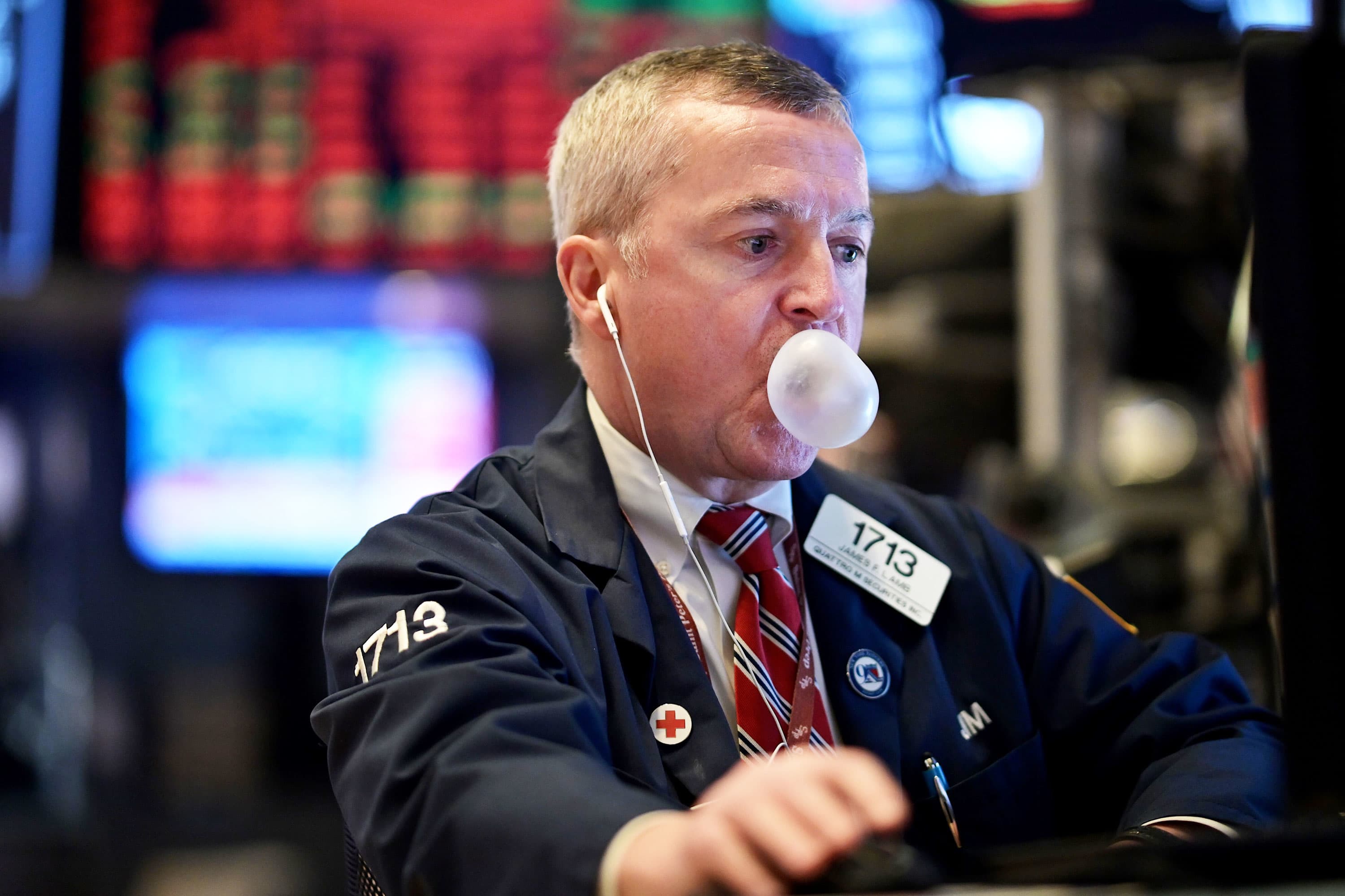
Does financial market history even matter anymore?
Many pundits say no, since a new wave, of low-to-zero-cost trading, and another wave of high-quality market information has "democratized" investing so much so that the retail public is just as informed, or certainly can be, as multibillionaire investors.
Now, some of us have recently questioned this line of reasoning as a more nuanced way of using the dreaded phrase "this time is different" when it comes to describing a bubble-like environment in financial assets.
It's a phrase we often hear before the inevitable, and broad-based, price decline asserts itself.
The rationalizations have been uttered by such notables as Chamath Palihapitiya, a billionaire investor himself, to Barstool's David Portnoy, a centimillionaire who claims stocks, or "stonks," in his parlance, can only go up.
Chamath, on CNBC last week, opined that individual investors have access to the same information as the pros, an idea that was popularized in the 1990s, during the internet bubble, and that the maturing of business television networks, of which CNBC was the leader, had so democratized information that individuals could trade like the pros.
While I was a full participant in that experience, we found out that democratization only goes so far, and the real pros always have an edge.
The broader financial media have, somewhat belatedly, begun to take notice of the extraordinary increase in day-trading being undertaken by individual investors today, many of whom have been sheltering-in-place during the pandemic, are bored with the inability to gamble on sports, or just want to make a killing on Wall Street as stocks, large and very small, continue to soar.
The relatively recent action on Wall Street, about which I have expressed a great degree of caution, has been met with an equally great degree of derision by some internet gurus of current vintage … no need to belabor that point.
However, The Wall Street Journal reported over the weekend that day-trading among individual investors is now more popular than it was during the internet frenzy of the 1990s, and that more and more inexperienced individuals are rolling the dice on Wall Street expecting day-trading to turn into a day job.
As in the 1990s, 1960s, 1920s, 1870s, and even the 1630s, this raises the question as to whether or not extreme day-trading, the concentration of unprecedented gains in mega-cap stocks coupled with rampant speculation in so-called "penny stocks" is indicative of yet another stock market bubble.
Many market historians have written important books about financial market bubbles. Charles McKay, author of "Some Extraordinary Delusions and the Madness of Crowds," published in 1841, was among the first to chronicle Holland's excess speculation in tulip bulbs in the 1630s.
Prominent economists and historians from John Kenneth Galbraith, "The Great Crash 1929," published in 1954, and "A Short History of Financial Euphoria," from 1993, to Edward Chancellor's, "Devil Take the Hindmost," published in 1999, to Charles P. Kindleberger's, "Manias, Panics and Crashes," from 1978, have written eloquently and clearly about the commonalities and repetitive nature of speculative episodes and financial market excesses.
Books by Hyman Minsky, Naseem Taleb, Jeremy Grantham, and myself, among others, have sought to identify the makings of a bubble and assess its impact on the economy as a whole.
Kindleberger is most adept at describing the necessary conditions that define a bubble. They are as follows:
- Displacement (We call it technological innovation)
- Monetary Expansion (We call it zero-interest-rate policy and quantitative easing)
- Overtrading (We call it retail speculation)
- Revulsion (We call it a crash)
- Discredit (We call it a secular bear market)
It would appear we are in Phase III of Kindleberger's five stages of a bubble.
It's also a quite common feature of a bubble that those who question the euphoria of the moment to be criticized, excoriated publicly, and sometimes even threatened, for pointing out that bubbles are routine, repetitive and eventually damaging events that separate many from their money.
Let me just say with certainty that speculative episodes, one of which is currently being rationalized as a democratizing event in the financial markets, will end badly.
I've seen it happen many times in my career.
Wild speculative episodes in shares of public companies date back as far as 1st Century Rome, Chancellor wrote.
There is also archaeological evidence that futures markets, mortgages, and other derivative financial instruments, were introduced to the investing public as far back as Ancient Sumeria. (And by the way, I have a ziggurat in Ur to sell you … cheap!)
In our infinitely more-advanced society, meanwhile, the individual's expanded access to new technologies for inexpensive trading, unlimited amounts of information (even if some of it is questionable or not nearly as helpful as that which can be accessed by professionals), and the rise of popular figures who extol the benefits of day-trading has made this America's national parlor game once again.
A word of caution, those who are drawing you in will likely exit the market well before you do. Trust me.
Or, if you don't, read the works of anyone I mentioned above. I may not, according to some, know what the hell I'm talking about, but I am certain as hell that they sure do.
Commentary by Ron Insana, a CNBC and MSNBC contributor and the author of four books on Wall Street. Follow him on Twitter @rinsana.
"time" - Google News
July 27, 2020 at 09:40PM
https://ift.tt/3gb2CqU
Insana: When market pundits say, 'this time is different,' brace for the possibility that it's not - CNBC
"time" - Google News
https://ift.tt/3f5iuuC
Shoes Man Tutorial
Pos News Update
Meme Update
Korean Entertainment News
Japan News Update
Bagikan Berita Ini














0 Response to "Insana: When market pundits say, 'this time is different,' brace for the possibility that it's not - CNBC"
Post a Comment